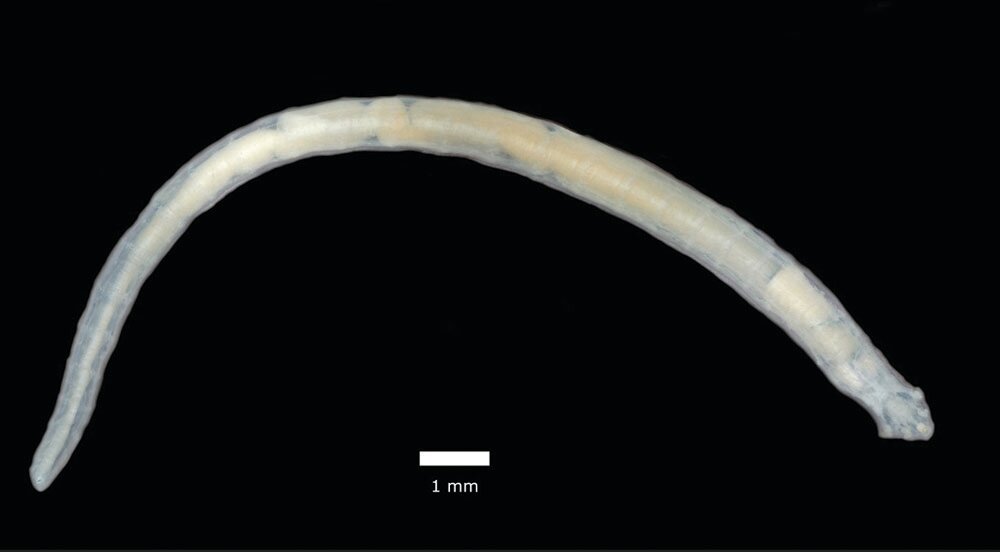A non-native lung parasite, Raillietiella orientalis, has reportedly spread across 25 counties..
Join our family of readers for as little as $5 per month and support local, unbiased journalism.
Already have an account? Log in to continue. Otherwise, follow the link below to join.
Please log in to continue |

A non-native lung parasite, Raillietiella orientalis, has reportedly spread across 25 counties in Florida, posing a threat to native snakes and other wildlife. The University of Florida Invasion Science Research Institute (ISRI) has unveiled a new website to strengthen the efforts of a coalition known as Snake Lungworm Alliance & Monitoring, or SLAM. Researchers from partnering universities, land managers, local government agencies and citizen scientists collaborate in the alliance’s mission to understand the extent of the lung parasite’s impact on native snake populations and emphasize the importance of enhancing its surveillance efforts.
“Our goal is to amplify the message of SLAM in its mission to spread awareness of this national initiative addressing the impacts of this parasite as a growing ecological and undetermined additional health risk that is spreading through Florida and potentially the southeastern United States,” said Paul Evans, ISRI research coordinator.
Evans, who works with SLAM to increase public awareness and participation in the project, says there is not enough data to determine the full scope of the parasite’s impact.
“Which is exactly why we need more research and more citizen science reporting to determine its full impact on what could be to other wildlife, agriculture and even public health,” she said.
The website serves as a repository of information, including fact sheets, educational maps and other resources promoting outreach and the latest research. It also provides easy access for citizen scientists to report when they come across deceased snakes. Once snakes are recorded, they are collected by a scientist and examined to record their location and perform additional research on the parasite and condition of the snake.
“Our network, founded in the spring of 2022, aims to assess the prevalence and intensity of Raillietiella orientalis infection in snake communities to further characterize the conservation concerns it poses to native herpetofauna,” said Jenna Palmisano, a founder of SLAM and doctoral student at the University of Central Florida. “Given the broad range of host species and its presence in the pet trade, expanding the SLAM network remains imperative.”
The parasites live intricate life cycles involving multiple host species. They begin as what scientists call pentastomes, wormlike crustaceans. They infect various animals like fish, amphibians and mammals as intermediate hosts before reaching snakes, their final host, for reproduction and egg release. Snakes become infected when they consume an intermediate host carrying the pentastomes. In Florida, the parasite’s life cycle starts with invertebrates that feed on feces. Larval forms are then passed to lizards, amphibians or small mammals when they consume these infected invertebrates.
Scientists think the snake lungworm was introduced to the United States by the establishment of Burmese Pythons in Florida.
A parasite spread from non-native pythons to native snakes has been found in 25 Florida counties. Infections have recently been found as far north as St. Johns County. At least 17 Florida snake species are known to have been infected.
UF/IFAS and the University of Central Florida are investigating two invasive snake pentastomes and studying their impacts on human and wildlife health. Hundreds of native snakes and lizards have been found dead and, due to exporting of native snakes for pet trade cases outside of the Sunshine State, have already been reported.
Other coalition members include Florida Gulf Coast University, Stetson University, Florida Southwestern Community College, Georgia Southern University, North Carolina State University, Amphibian and Reptile Conservancy, Partners in Amphibians, Reptiles Conservation, Rattlesnake Conservancy, Fish and Wildlife Conservation Commission, and North Carolina Herpetological Conservancy. For more information, log on to the website at https://invasionscience.ufl.edu/slam.